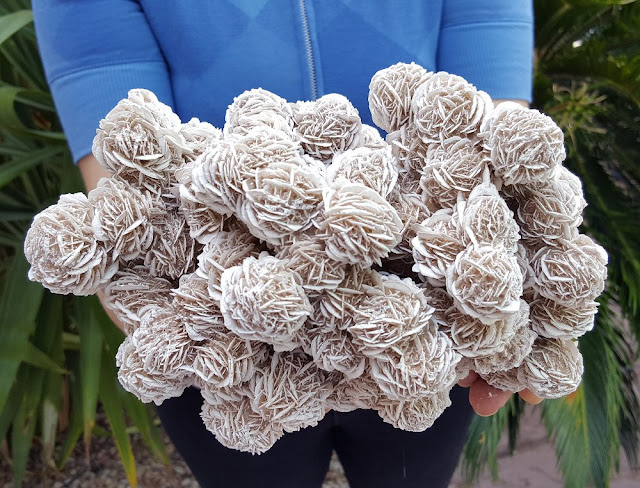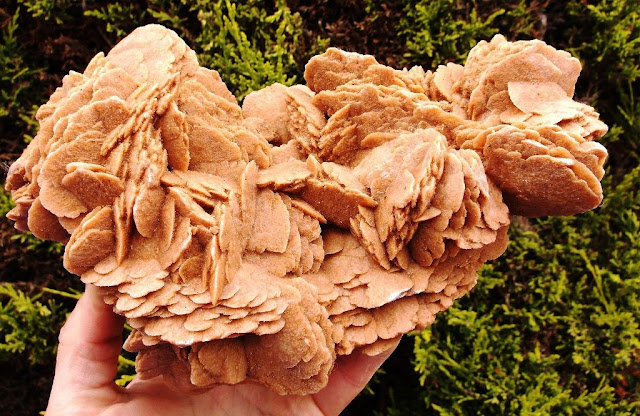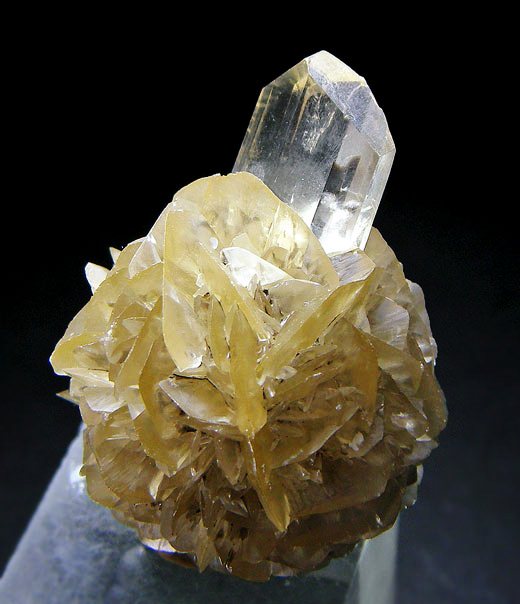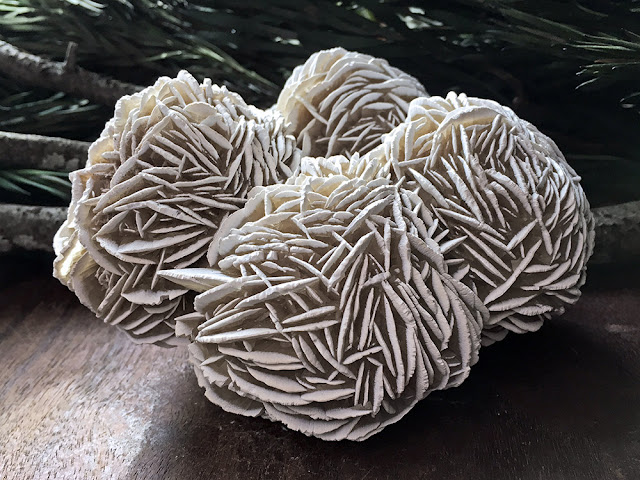How Do Desert Roses Form?
 |
| Large cluster of Desert Rose crystals, Chihuahua, Mexico. Credit: CrystalMiner |
Desert rose is the colloquial name given to rose-like formations of crystal clusters of gypsum or baryte which include abundant sand grains.The ‘petals’ are crystals flattened on the c crystallographic axis, fanning open in radiating flattened crystal clusters.
Gypsum is an evaporite, which means its crystals form during the evaporation of water. The crystals are shaped like prisms or flat plates, and can grow up to 1 meter. Gypsum can appear as transparent crystals (selenite); fibrous, elongated crystals (satin spar); granular and compact masses (alabaster); and in rosette-shaped aggregates called desert roses.
The rosette crystal habit tends to occur when the crystals form in arid sandy conditions, such as the evaporation of a shallow salt basin. The crystals form a circular array of flat plates, giving the rock a shape similar to a rose blossom. Gypsum roses usually have better defined, sharper edges than baryte roses. Celestine and other bladed evaporite minerals may also form rosette clusters. They can appear either as a single rose-like bloom or as clusters of blooms, with most sizes ranging from pea sized to 4 inches (10 cm) in diameter.
- In more shallow regions is an amber colored compact ball of intergrown crystals with small, thin blades pointing out from the core seems to be the standard.. Sometimes large transparent amber blades protrude out of this core producing spectacular specimens.
- In deeper layers, the crystals in the rosette are larger, more distinct and blocky. The color in these specimens are typically yellow, but can also be colorless. Large blades protruding from these rosettes are also blocky.
In both forms, some of the large blades may have clay or a rock included. All the crystals are fluorescent and phosphorescent, glowing a pale white under ultraviolet light.
 |
| Large and impressive Baryte Desert Rose crystal cluster from Tunisia. Photo: Past Impressions Crystal |
 |
| Gypsum Rosettes from Winnipeg,Manitoba,Canada credit: GEODE |
 |
| Large selenite desert rose cluster from Mexico |
Read also:
What Is the Difference Between Moonstone and Opalite?
How Do Opalised Fossils Form?
How to Identify Common Minerals?